Artists usually have a keen eye for beauty. In our everyday musings they find extravagant wonders. Yesterday I mentioned how biology is the one of the most fundamental sources of beauty and it demonstrates the artistic talents of this Universe. Today I would like to continue that discussion by presenting the work of Ernst Haeckel, one of my newfound admirations. The best way to introduce an artist is through their work. First my favourite, some Hydrozoa…
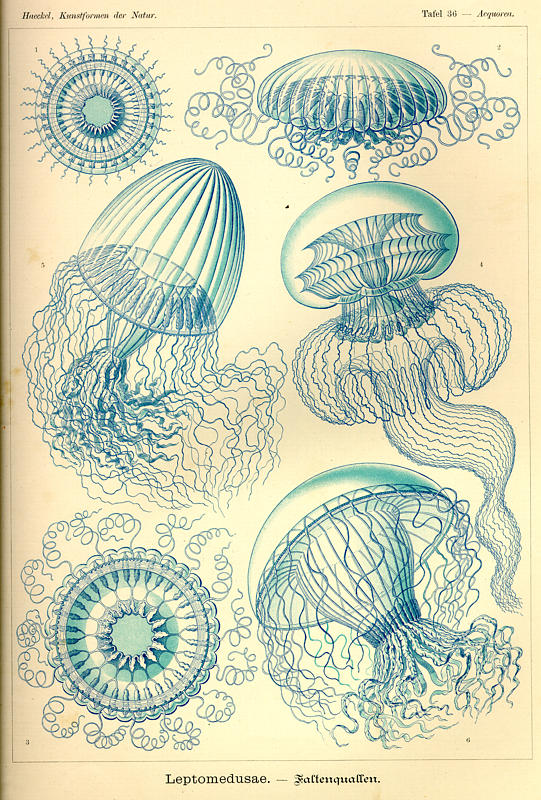
…and now some colourful spiders…
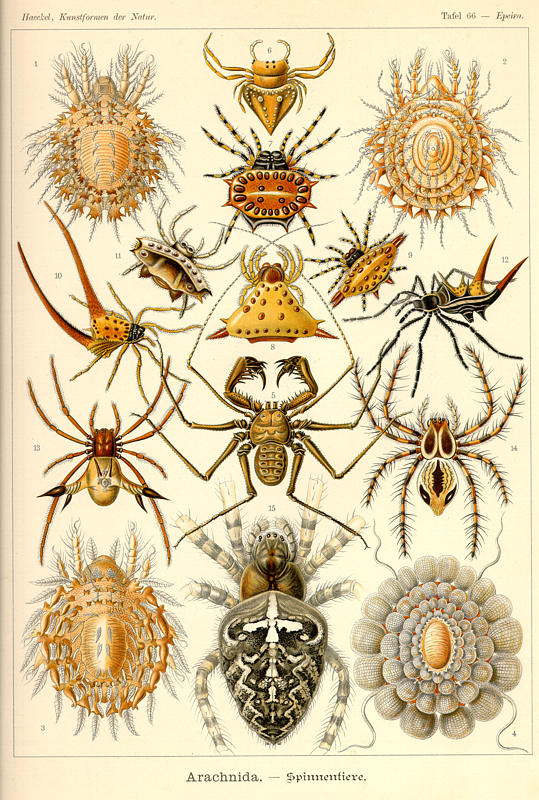
To my personal collection of books I plan to add Art Forms from the Ocean: The Radiolarian Prints of Ernst Haeckel which is a reproduction of Haeckel’s famous artwork of Radiolaria, which are protozoa that grow into a menagerie of intricate morphologies. Ernst Haeckel’s work is iconic and I am sure you would have encountered it on various book covers, posters, and postcards. He was a pioneer of his artstyle and could extract beauty from an organism by delicately highlighting its fundamental aspects. Only be segregating an organism from its natural habitat does Haeckel draw our attention towards its quirks; its undulations and its self-similarities. On his pages of genera we start to see various patterns among the species and how one lineage could have physically evolved from another.
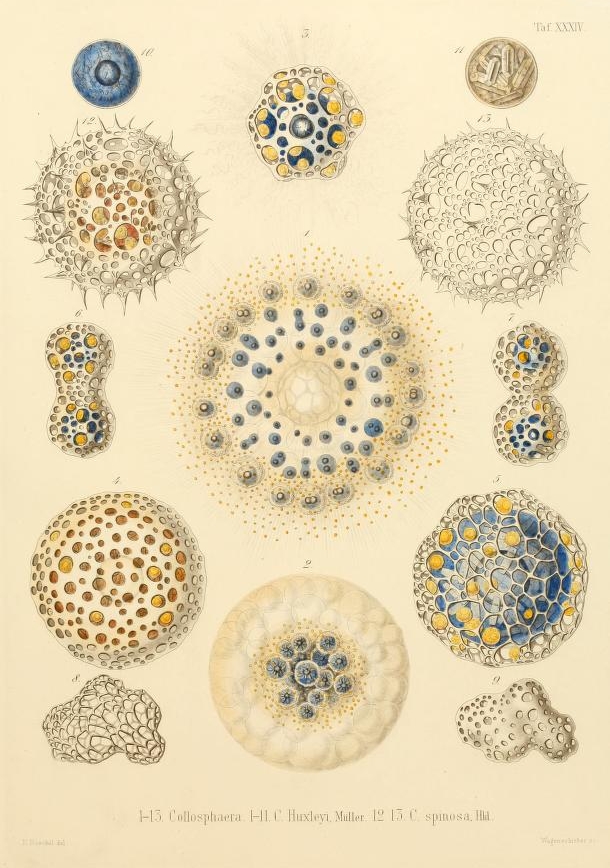
I present this last one of Haeckell’s because it is truly of alien origin and its patterns provide a perfect introduction for the work of Andrew Nelson. At some future point I will elaborate further on Nelson’s work and research more about his life and research, but for now enjoy the pieces below in all their uncomfortable majesty.
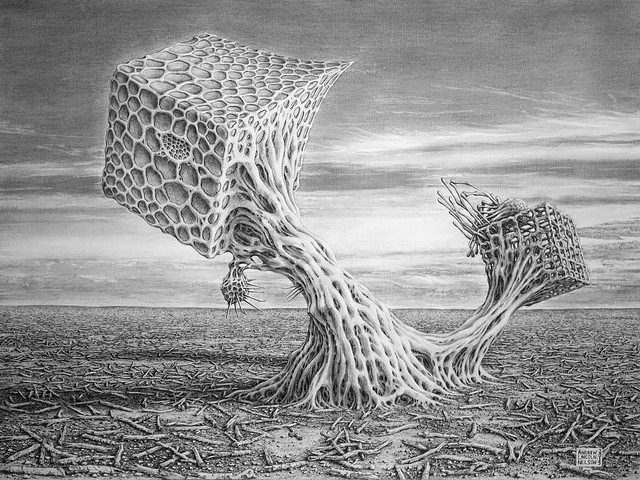
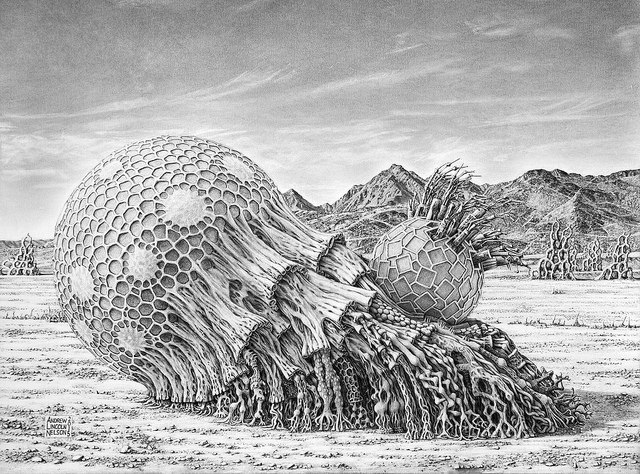
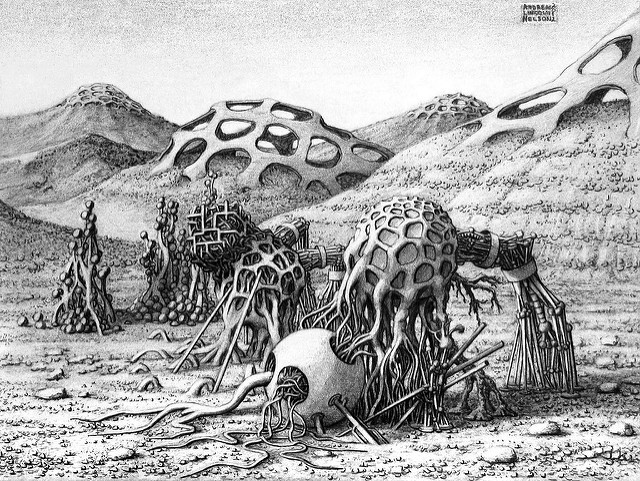
How disturbing and beautiful this work is. To me it reflects well the true nature of machines we could one day create. ‘Create’ is the correct word, as I believe these machines will not be ‘designed’ by human ingenuity. Our final work could be the development of nano-robots or evolving machines - most likely slightly organic in their nature - with the result being something not too far from Nelson’s drawings. I also enjoy how the robots (or creatures, I am not quite certain what to call them) are not all motile. Some plant-like sesiles can be seen rising from the wasteland in this almost post-human era of mindless, purposeless machines. Perhaps early life at the microscale was not too disimilar from this world? But now I am not sure because the creatures also exude a sense that something is amiss in their design. Did something go terribly wrong when robotic evolution became unrecoverable, like Pandora’s box, and wiped out the humans? We usually envision a robotic species overtaking our planet and then continuing our legacy throughout the galaxy, but imagine arriving on a ‘habited’ alien world and finding these forms sprawling along the surface, purposeless and awkward. How wrong these lifeforms would seem to us.
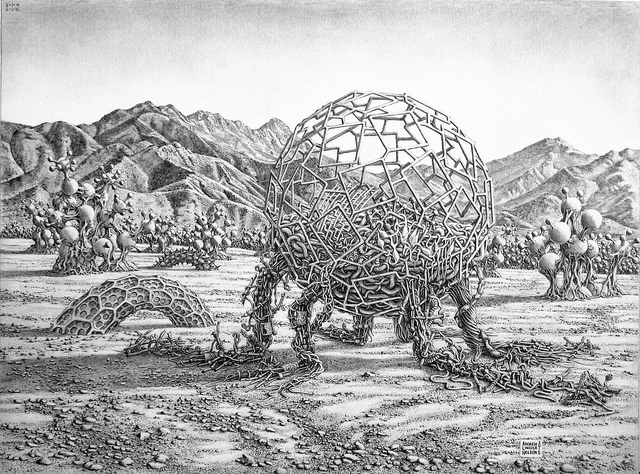
Nelson’s poster that discusses this work is titled [Life as it Could Be: The Living Machines Series: Robot 21 and Robot 25 (found here). A few quotes from it to set the mood:
“Perhaps distant ancestors of these machines were constructed by humans or other organic beings, but now they are self-propagating, building and rebuilding themselves, and building their own offspring.”
“Its purpose for existence – beyond existence itself – is not exactly clear to the outside observer. It is not a machine designed for any obvious explicit human-imposed purpose.”
The whole set of robotic artwork can be found here. Please also take a look at Andrew’s website about evolutionary robotics. Some useful resources to have at hand.